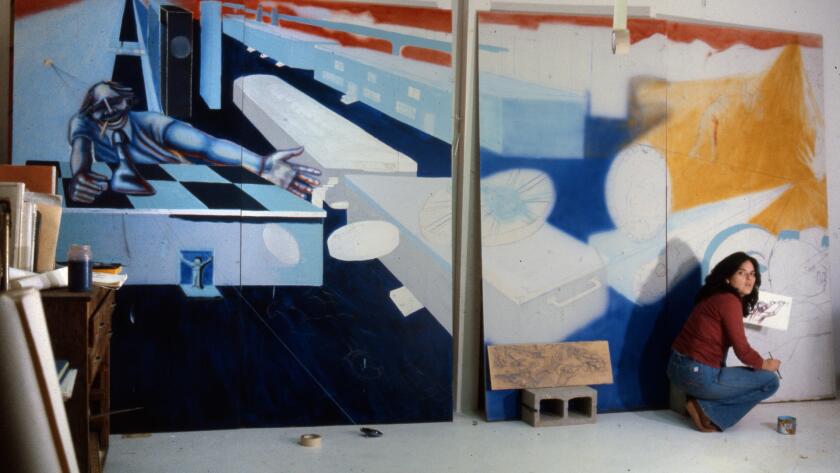Baca
When activist painter Judy Baca conceived “The Great Wall of Los Angeles” in 1975 as a monument to the history of Indigenous peoples in California, she didn’t realize that she was embarking on a 50-year journey that would employ 400 youth painters and create one of the largest murals on the planet.
- Share via
When we were approached by LACMA to make a film about Judy Baca, the legendary Chicana activist, educator and muralist, we jumped at the chance to tell a story about an artist who has dedicated her life to telling other people’s stories.
Her murals can be seen all over the world, but it’s the work found in her native Los Angeles that defines her career. “The Great Wall of Los Angeles” is a half-mile-long mural in the Tujunga Wash of the San Fernando Valley that was painted over the course of five summers with a community of at-risk youth artists. It depicts the forgotten history of the minority peoples that built California. When we first stepped into the Wash, we understood the magnitude of documenting this history. As Judy likes to say, the land holds memory, and claiming space in the form of a mural is a way of unearthing that memory.
Throughout the process of making this film, we found that we shared a kindred approach to art and storytelling in this way. Her murals are another form of documentary storytelling. The mediums may be different, but we both believe in the power of community, past and present.
Her murals can be seen all over the world, but it’s the work found in her native Los Angeles that defines her career. “The Great Wall of Los Angeles” is a half-mile-long mural in the Tujunga Wash of the San Fernando Valley that was painted over the course of five summers with a community of at-risk youth artists. It depicts the forgotten history of the minority peoples that built California. When we first stepped into the Wash, we understood the magnitude of documenting this history. As Judy likes to say, the land holds memory, and claiming space in the form of a mural is a way of unearthing that memory.
Throughout the process of making this film, we found that we shared a kindred approach to art and storytelling in this way. Her murals are another form of documentary storytelling. The mediums may be different, but we both believe in the power of community, past and present.
